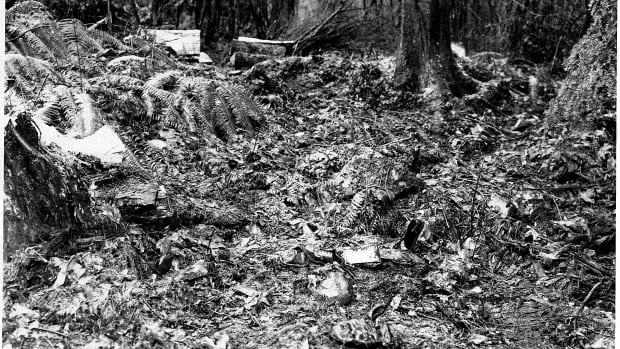A university laboratory in Thunder Bay, Ont., has successfully extracted DNA samples from the remains of two unidentified children found in Vancouver, part of ongoing efforts to find answers in the nearly seven-decade-old Babes in the Woods case.
The investigation has progressed in spurts since 1953, when a gardener working in Stanley Park discovered the remains of two boys, aged seven and eight, underneath a woman’s coat along with the hatchet believed to have been used as the murder weapon.
Police estimated they were killed in 1947, but the identities of the two boys — believed to be brothers — have never been uncovered.
“Who they were … that’s the biggest question,” said Brian Honeybourn, a retired sergeant with the Vancouver Police Department who worked on the case in the late 1990s.
“I don’t live under any illusion that the murderer is ever going to face any justice in court — they’re probably long gone by now — but it’d be very nice to find out the identity of these children and give them back their name,” Honeybourn told CBC News in an interview.
In May, Vancouver police announced they were hoping an emerging field involving new crime-solving technologies, called forensic genetic genealogy, might be able to make that happen.
At the time, Sgt. Steve Addison said in a statement, “We still don’t know who these boys were, why they were in Vancouver or who killed them.”

The first step was to extract DNA samples, a task complicated by the age of the remains and the sheer number of people who have previously handled them. The remains were previously on display at the Vancouver Police Museum.
Worked with bone fragments
But Lakehead University’s Paleo-DNA Laboratory, which was recently in the news for its work to identify a sailor from the doomed 1845 Franklin Expedition, was able to successfully extract the sample, according to the lab’s technical manager, Stephen Fratpietro.
“They did send us bone fragments, and that’s what we had to work with — just small bone fragments.” Fratpietro told CBC News. “We were able to extract … a significant amount of DNA and we sent it off to the whole genome sequencing facility.”
Lakehead’s lab was selected specifically for its expertise in ancient remains, said Anthony Redgrave, lead genetic genealogist with his company, Redgrave Research Forensic Services, and the person overseeing the entire process.
“I figure if they can work with paleo-DNA, they can work with something from the ’50s.”
Redgrave said DNA samples suggest the two boys were half-brothers.
The DNA samples are now with a genetic sequencing company in Alabama that will extract a significant amount of data from the sample. A third company will then sift through to pull out the most relevant genetic data, before Redgrave is able to start looking at private DNA databases for possible familial connections to the two young boys.
The process is different from standard forensic testing, because the team isn’t looking to identify the victims themselves, but are searching for living relatives of the victims, Redgrave said.

“Then, we have to build their family trees to see how they’re related to each other, and how the person we’re trying to ID fits into that puzzle,” said Redgrave.
The crime-solving technology has been used only a handful of times in recent years to solve cold cases. Using forensic genetic genealogy in 2018, Washington state police arrested a man in a 1987 double homicide of a young couple from Saanich, B.C.
Redgrave said it’s unlikely they will find birth records for the two young boys, but he hopes to identify the mother and both fathers of the half-siblings.
“At that point, the rest of the investigation can continue, because you can’t really continue a homicide investigation without knowing who the victims are,” said Redgrave.
The ultimate goal, he added, is to help find long-awaited answers and bring some closure to the families.
On The Coast8:20Babes in the Woods
The Babes in the Woods murders have baffled local police for nearly 70 years. Hear local crime historian Eve Lazarus walks us through the case and explains how new DNA testing might solve one of the key mysteries. 8:20


